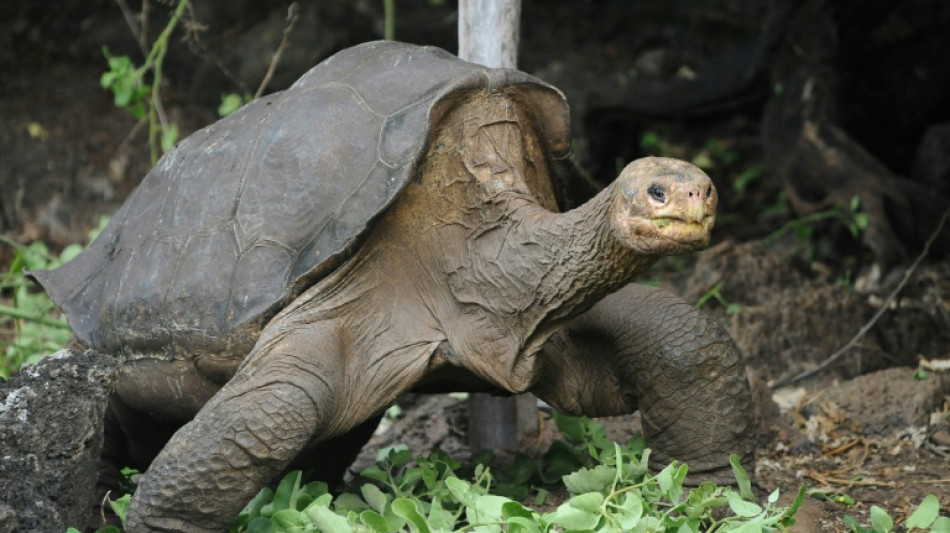
-
 Former world champion Tanak calls time on rally career
Former world champion Tanak calls time on rally career
-
Ukraine scrambles for energy after Russian attacks

-
 Over 1 million evacuate as deadly Super Typhoon Fung-wong nears Philippines
Over 1 million evacuate as deadly Super Typhoon Fung-wong nears Philippines
-
Erasmus' ingenuity sets South Africa apart from the rest

-
 Asaji becomes first Japanese in 49 years to win Singapore Open
Asaji becomes first Japanese in 49 years to win Singapore Open
-
Vingegaard says back to his best after Japan win

-
 Philippines evacuates one million, woman dead as super typhoon nears
Philippines evacuates one million, woman dead as super typhoon nears
-
Ogier wins Rally Japan to take world title fight to final race

-
 A decade on, survivors and families still rebuilding after Paris attacks
A decade on, survivors and families still rebuilding after Paris attacks
-
Russia's Kaliningrad puts on brave face as isolation bites

-
 Philippines evacuates hundreds of thousands as super typhoon nears
Philippines evacuates hundreds of thousands as super typhoon nears
-
Syrian president arrives in US for landmark visit

-
 Cyndi Lauper, Outkast, White Stripes among Rock Hall of Fame inductees
Cyndi Lauper, Outkast, White Stripes among Rock Hall of Fame inductees
-
Fox shines in season debut as Spurs down Pelicans, Hawks humble Lakers

-
 New Zealand edge West Indies by nine runs in tense third T20
New Zealand edge West Indies by nine runs in tense third T20
-
Messi leads Miami into MLS playoff matchup with Cincinnati

-
 Ukraine scrambles for energy with power generation at 'zero'
Ukraine scrambles for energy with power generation at 'zero'
-
India mega-zoo in spotlight again over animal acquisitions

-
 Messi leads Miami into MLS Cup playoff matchup with Cincinnati
Messi leads Miami into MLS Cup playoff matchup with Cincinnati
-
Tornado kills six, injures 750 as it wrecks southern Brazil town

-
 Minnesota outlasts Seattle to advance in MLS Cup playoffs
Minnesota outlasts Seattle to advance in MLS Cup playoffs
-
Marseille go top in Ligue 1 as Lens thrash Monaco

-
 Fourteen-man South Africa fight back to beat France
Fourteen-man South Africa fight back to beat France
-
Atletico, Villarreal win to keep pressure on Liga giants

-
 Chelsea down Wolves to ease criticism of Maresca's rotation policy
Chelsea down Wolves to ease criticism of Maresca's rotation policy
-
England's Genge eager to face All Blacks after Fiji win

-
 Wasteful Milan draw at Parma but level with Serie A leaders Napoli
Wasteful Milan draw at Parma but level with Serie A leaders Napoli
-
Fire kills six at Turkish perfume warehouse

-
 Djokovic pulls out of ATP Finals with shoulder injury
Djokovic pulls out of ATP Finals with shoulder injury
-
Rybakina outguns world No.1 Sabalenka to win WTA Finals

-
 Norris survives a slip to seize Sao Paulo pole
Norris survives a slip to seize Sao Paulo pole
-
Sunderland snap Arsenal's winning run in Premier League title twist

-
 England see off Fiji to make it nine wins in a row
England see off Fiji to make it nine wins in a row
-
Australia connection gives Italy stunning win over Wallabies

-
 Arsenal winning run ends in Sunderland draw, De Ligt rescues Man Utd
Arsenal winning run ends in Sunderland draw, De Ligt rescues Man Utd
-
Griezmann double earns Atletico battling win over Levante

-
 Title-leader Norris grabs Sao Paulo Grand Prix pole
Title-leader Norris grabs Sao Paulo Grand Prix pole
-
Djokovic edges Musetti to win 101st career title in Athens

-
 Rybakina downs world No.1 Sabalenka to win WTA Finals
Rybakina downs world No.1 Sabalenka to win WTA Finals
-
McKenzie ends Scotland dream of first win over New Zealand

-
 McKenzie stars as New Zealand inflict heartbreak upon Scotland
McKenzie stars as New Zealand inflict heartbreak upon Scotland
-
De Ligt rescues Man Utd in Spurs draw, Arsenal aim to extend lead

-
 Kane saves Bayern but record streak ends at Union
Kane saves Bayern but record streak ends at Union
-
Bolivia's new president takes over, inherits economic mess

-
 Edwards set for Wolves job after Middlesbrough allow talks
Edwards set for Wolves job after Middlesbrough allow talks
-
COP30: Indigenous peoples vital to humanity's future, Brazilian minister tells AFP

-
 Marquez wins Portuguese MotoGP sprint race
Marquez wins Portuguese MotoGP sprint race
-
Saim, Abrar star in Pakistan's ODI series win over South Africa

-
 Norris extends title lead in Sao Paulo GP sprint after Piastri spin
Norris extends title lead in Sao Paulo GP sprint after Piastri spin
-
Man Utd have room to 'grow', says Amorim after Spurs setback


Extinct-in-the-wild species in conservation limbo
For species classified as "extinct in the wild", the zoos and botanical gardens where their fates hang by a thread are as often anterooms to oblivion as gateways to recovery, new research has shown.
Re-wilding what are often single-digit populations faces the same challenges that pushed these species to the cusp of extinction in the first place, including a lack of genetic diversity. But without conservation efforts, experts say, chances of these species surviving would be even smaller.
Since 1950, nearly 100 animal and plant species vanquished from nature by hunting, pollution, deforestation, invasive lifeforms and other drivers of extinction have been put into critical care by scientists and conservationists, according to the findings.
While the category "extinct in the wild" was not added to the benchmark Red List of Threatened Species until 1994, the term could have applied to all of them.
Of these species teetering on the edge, 12 have been reintroduced to some degree back into the wild, according to a pair of studies published last week in the journals Science and Diversity.
Another 11, however, have gone the way of dinos, dodos and dozens of Pacific island trees, whose delicate flowers will never again grace the planet.
Biodiversity loss has reached crisis proportions not seen since an errant asteroid as big across as Paris smashed into Earth 66 million years ago, wiping out land dinosaurs and ending the Cretaceous period.
That was one of five so-called mass extinction events over the last half-billion years.
Scientists say human activity has pushed Earth into the sixth, with species disappearing 100 to 1,000 times more quickly than normal.
"Real opportunities to prevent extinction and return previously lost species to the wild abound and we must take them," the international team of 15 authors said.
"We have lost 11 species entirely under our care to extinction since 1950."
- Success stories -
Another study published last week in Current Biology -- looking at the "Great Dying" event 252 million years ago that annihilated 95 percent of life on Earth -- showed that accelerated species loss preceded broader ecological collapse.
"Currently, we may be losing species at a faster rate than in any of Earth's past extinctions," lead author Yuangeng Huang, a researcher at the China University of Geosciences, told AFP.
"We cannot predict the tipping point that will send ecosystems into a total collapse but it is an inevitable outcome if we do not reverse biodiversity loss."
Recent conservation success stories -- some of them heroic -- include the European bison, which once roamed across Europe.
By the 1920s their numbers were so reduced that surviving specimens were rounded up into zoos and a breeding programme was launched in Poland.
After reintroduction into the wild in 1952, the broad-shouldered beasts thrived and are no longer considered threatened with extinction by the Internation Union for the Conservation of Nature (IUCN), the keepers of the Red List.
Red wolves in North America, wild horses in central Asia and the desert-dwelling Arabian oryx have all staged comebacks with a helping human hand.
So has the largest land tortoise in the world, native to Espanola Island in the Galapagos.
By the 1970s, Chelonoidis hoodensis had been eaten to the brink. Fourteen surviving individuals were removed and relocated decades later to another island, where their numbers are increasing.
- 'Overlooked category' -
Giant Pinta tortoises on a neighbouring Galapagos island -- one of the 11 extinct-in-the-wild species that didn't make it -- were not so lucky.
After living for half a century as his species' sole survivor, a 75-kilogramme (165-pound) male known as Lonesome George died in 2012.
Other creatures that never made it out of intensive care include Hawaii's black-faced honey creeper, a petite bird devastated by mosquito-borne avian malaria last seen in 2004; Mexico's freshwater Catarina pupfish, unsuccessfully relocated to captivity when its native habitat dried out due to groundwater extraction; and five types of snail on the Society Islands that fell victim to an invasive carnivorous cousin.
Surprisingly, the studies show that species surviving only in controlled environments are in a kind of conservation limbo.
"This is an overlooked category," the researchers noted.
"Despite being considered most at risk, extinct-in-the-wild species are not assessed under the Red List process."
"We have largely ignored the extent of, and the variation in, extinction risk of the very group of species for which humans are most responsible," they added.
Of the 84 species currently with this status, nearly half have not benefitted from attempts to reintroduce them into the wild. Most are plants, suggesting a possible bias towards reintroducing animals that might not be entirely scientifically justified.
At its most recent World Conservation Congress in 2020, the IUCN called for the reestablishment of extinct-in-the-wild species in the wild by 2030.
P.Martin--AMWN

